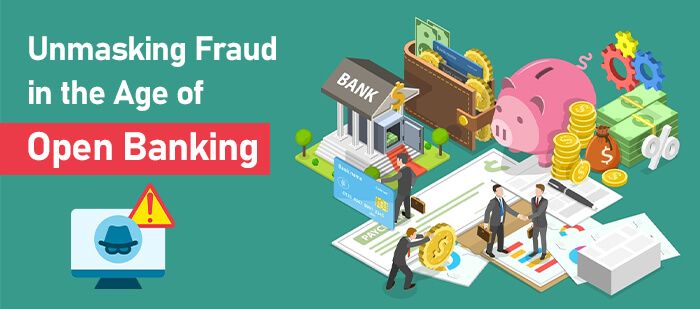
The financial industry is undergoing a seismic shift, with Open Banking spearheading this revolution. As banking transitions to a more digitally interconnected world, it has given rise to new possibilities and potential pitfalls. In this era of Open Banking, one significant concern is the potential for fraud. In this blog post, we delve into the concept of Open Banking, how it exposes banks to fraud, and measures to mitigate these threats.
Understanding the Concept of Open Banking
Imagine Open Banking as an innovative highway, uniting various financial services through the use of Application Programming Interfaces (APIs). This modern system enables banks and financial institutions to share data with third-party developers. The outcome? A set of custom-built applications and services designed to elevate the banking experience. Through this digital network, information is transferred swiftly and efficiently, transforming the way both customers and financial institutions operate. Yet, like any highway, there’s always the risk of accidents. In the realm of Open Banking, this accident takes the form of fraud. So while Open Banking opens doors to a new era of financial convenience, it also opens potential gateways for fraudsters.
Some Related Blogs
- Understanding the Ins and Outs of Late Presentment Chargeback
- Protecting Your Finances: Understanding Visa Dispute Monitoring Program
- Fraud No More: Tips on How to Stop Friendly Fraud
- Maximizing Chargebacks in the Age of Financial Fraud and AI Detection
How Open Banking Exposes Banks to Fraud
With data as the gold in the era of Open Banking, fraudsters are given a vast field to mine. Unscrupulous elements could pretend to be legitimate third-party providers, tricking the system to gain access to customer information and transaction details. If the security protocols of these third-party platforms are not robust enough, they can easily be manipulated into becoming a Trojan horse, providing criminals a secret passage to the treasure trove of data. In such scenarios, the seemingly innocuous task of data sharing can transform into a catastrophic security breach.
The Essential Role of Strong Customer Authentication
In the universe of Open Banking, a powerful ally is the process of Strong Customer Authentication (SCA). This procedure, at its core, is a triple-check security measure to confirm the identity of the customer initiating a transaction. SCA involves verifying the customer through a unique combination of elements. These include something the customer knows, like a secret password, something they physically possess, such as a mobile device, and something inherent to them, for instance, a fingerprint. By weaving these layers of verification together, banks can establish a strong defense mechanism against fraudulent activities. This vital process of authentication, therefore, serves as a robust barrier, making it increasingly challenging for fraudsters to breach the security fortress of Open Banking.
The Rise of Artificial Intelligence in Fraud Prevention
In this intricate game of cat and mouse, banks are increasingly turning to Artificial Intelligence (AI) and machine learning to outsmart the crafty fraudsters. The ability of AI to sift through and analyze vast quantities of transaction data in real time is akin to having a hawk-eyed sentry on constant vigil.
![]()
Email us anytime!
Email customer service 24/7
![]()
Call us anytime!
Reach customer care 24/7 at +1 (888) 901-8653
It’s capable of identifying potential red flags, spotting unusual patterns that could hint at fraudulent activities. Add machine learning to the mix, and you have a vigilant guard that evolves with every interaction, enhancing its fraud detection capabilities over time. This innovative use of technology isn’t just a static watchdog, but a dynamic protector, forever adapting to keep your finances safe.
The Need for a Regulatory Framework for Open Banking
The emergence of Open Banking calls for solid guidelines that serve as the traffic signals on this innovative highway. Regulatory frameworks are the trusted guardians of Open Banking, setting robust safety norms, fortifying data privacy and fostering a fair environment for all players. It’s the regulatory muscle that turns Open Banking from a lawless frontier into a protected realm. Regulatory bodies worldwide are picking up their pace, crafting and refining rules to match the dynamism of this sector. This endeavor isn’t a sprint but a marathon requiring a steady commitment to oversight and flexibility in embracing change. In essence, the strength of Open Banking lies in the hands of these sturdy regulatory frameworks.
Educating Consumers on Open Banking Security
Amidst the maze of Open Banking, the customer plays a pivotal role. Yes, Open Banking offers an array of conveniences, but it’s critical for customers to comprehend the risks and the preventive measures. It’s about understanding the tell-tale signs of phishing or the importance of using secure networks. Banks, along with third-party providers, must take the lead in equipping customers with this knowledge, empowering them to become vigilant guardians of their financial data. It’s not just about reaping the benefits of Open Banking, but about safely navigating its intricate corridors. After all, the responsibility of maintaining a secure Open Banking environment is a shared endeavor.


